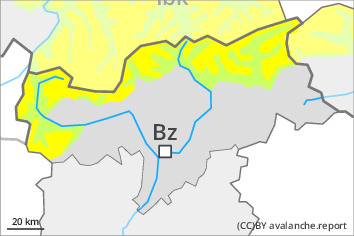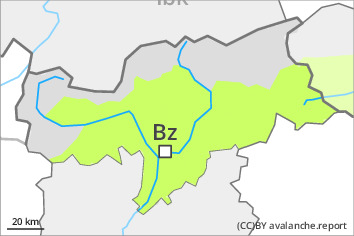
Danger level
 | 2200m |
|  |
|  | ||||
|  |
|  |

Weakly bonded old snow represents the main danger. As a consequence of warming during the day, the likelihood of slab avalanches being released will increase a little.
Weak layers in the old snowpack can be released in some places by individual winter sport participants. The avalanche prone locations are to be found in particular on very steep northwest, north and east facing slopes above approximately 2200 m. Caution is to be exercised in particular at transitions from a shallow to a deep snowpack, when entering gullies and bowls for example. As a consequence of warming during the day, the likelihood of slab avalanches being released will increase a little.
The fresh wind slabs are in some cases prone to triggering. These avalanche prone locations are to be found in particular on northwest to north to east facing aspects above approximately 2400 m, especially in gullies and bowls, and behind abrupt changes in the terrain.
In addition as the day progresses in the regions exposed to heavier precipitation, mostly small moist loose snow avalanches are to be expected. This applies on extremely steep slopes.
In the west the avalanche prone locations are more prevalent and the danger is slightly greater.
Snowpack
dp.1: deep persistent weak layer
dp.6: cold, loose snow and wind
In some regions 5 to 15 cm of snow, and even more in some localities, will fall until Sunday. The fresh snow and in particular the wind slabs are poorly bonded with the old snowpack in some places on shady slopes at elevated altitudes.
Faceted weak layers exist in the old snowpack, in particular on northwest, north and east facing slopes above approximately 2200 m.
The weather conditions as the day progresses will give rise to moistening of the snowpack.
Tendency
Monday: Significant warming. The avalanche danger will increase during the day.



